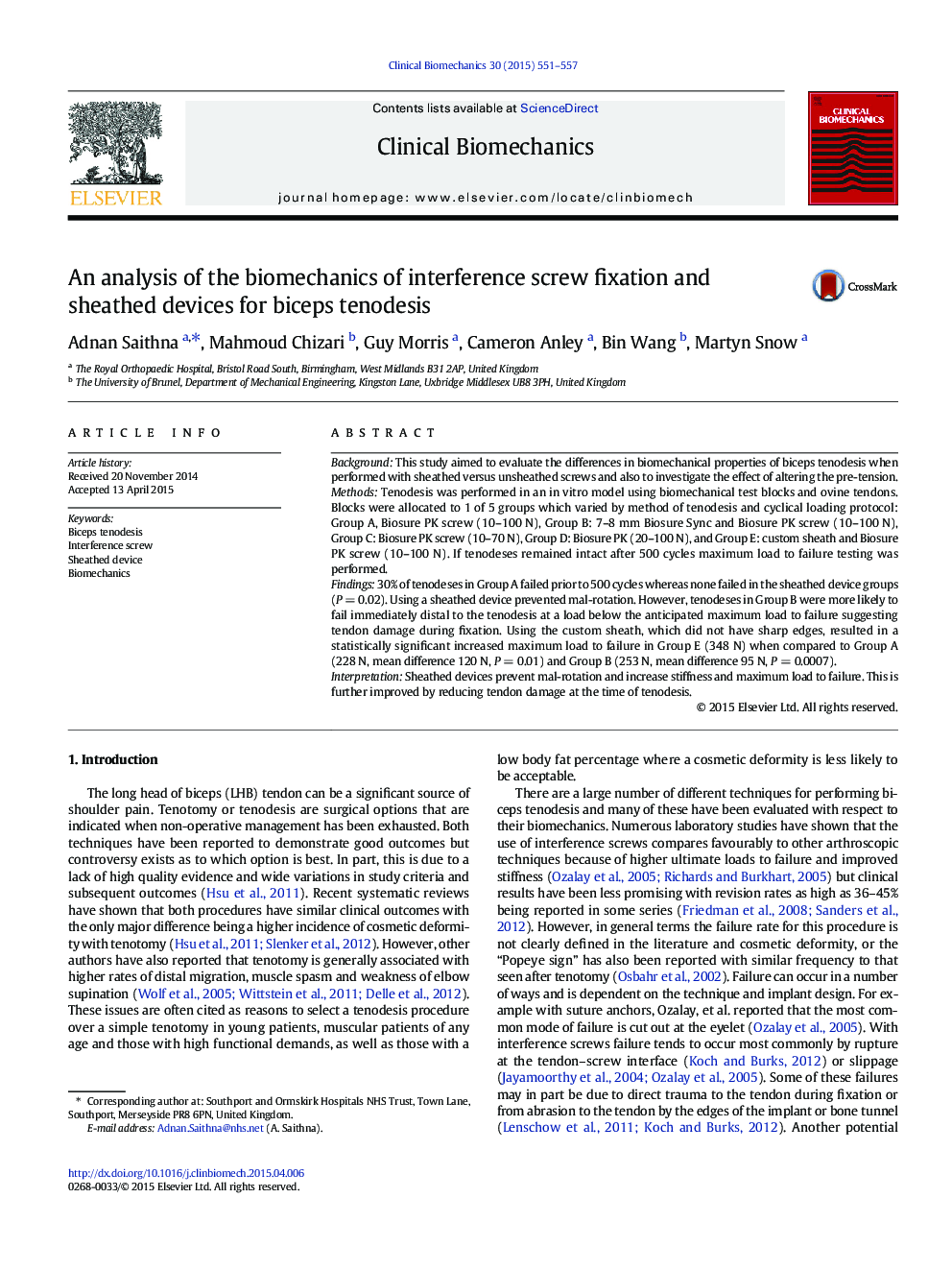| کد مقاله | کد نشریه | سال انتشار | مقاله انگلیسی | نسخه تمام متن |
|---|---|---|---|---|
| 4050237 | 1264913 | 2015 | 7 صفحه PDF | دانلود رایگان |

• Revision rates as high as 36–45% are reported for arthroscopic biceps tenodesis.
• Tendon injury and mal-rotation during screw insertion result in early failures.
• Using a sheathed device can reduce mal-rotation and increase the stiffness of tenodesis.
• Tendon damage can be minimised by using a sheath without sharp edges or splines.
BackgroundThis study aimed to evaluate the differences in biomechanical properties of biceps tenodesis when performed with sheathed versus unsheathed screws and also to investigate the effect of altering the pre-tension.MethodsTenodesis was performed in an in vitro model using biomechanical test blocks and ovine tendons. Blocks were allocated to 1 of 5 groups which varied by method of tenodesis and cyclical loading protocol: Group A, Biosure PK screw (10–100 N), Group B: 7–8 mm Biosure Sync and Biosure PK screw (10–100 N), Group C: Biosure PK screw (10–70 N), Group D: Biosure PK (20–100 N), and Group E: custom sheath and Biosure PK screw (10–100 N). If tenodeses remained intact after 500 cycles maximum load to failure testing was performed.Findings30% of tenodeses in Group A failed prior to 500 cycles whereas none failed in the sheathed device groups (P = 0.02). Using a sheathed device prevented mal-rotation. However, tenodeses in Group B were more likely to fail immediately distal to the tenodesis at a load below the anticipated maximum load to failure suggesting tendon damage during fixation. Using the custom sheath, which did not have sharp edges, resulted in a statistically significant increased maximum load to failure in Group E (348 N) when compared to Group A (228 N, mean difference 120 N, P = 0.01) and Group B (253 N, mean difference 95 N, P = 0.0007).InterpretationSheathed devices prevent mal-rotation and increase stiffness and maximum load to failure. This is further improved by reducing tendon damage at the time of tenodesis.
Journal: Clinical Biomechanics - Volume 30, Issue 6, July 2015, Pages 551–557